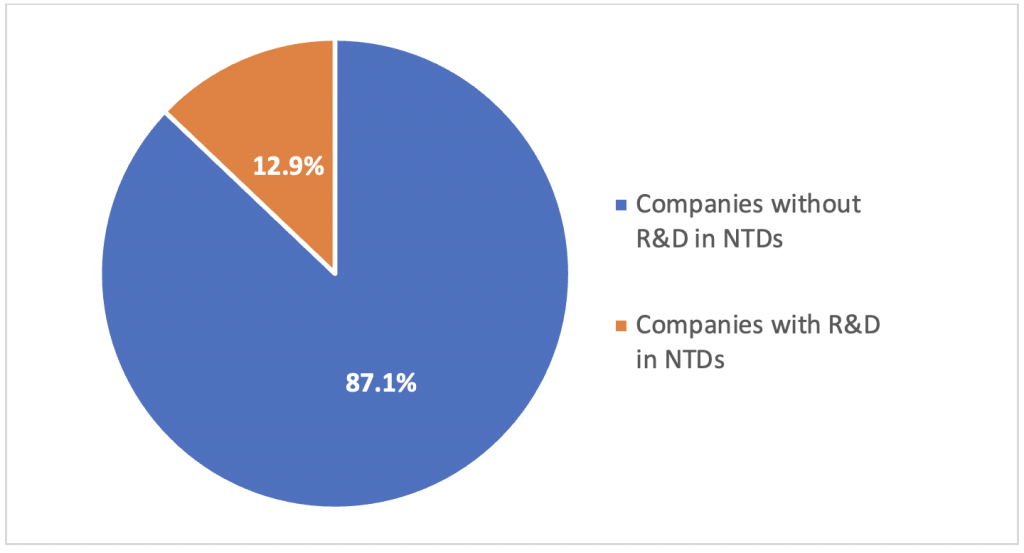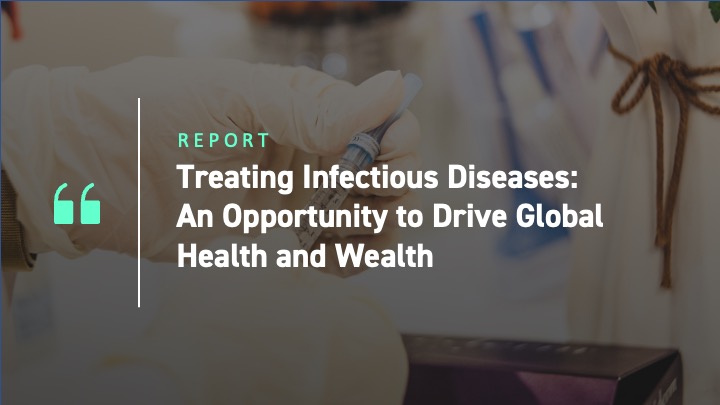Humanity has struggled with infectious diseases and subsequent epidemics for centuries. The discovery of the first antibiotics in the early 20th century and the later development of a wide array of antimicrobials and vaccines made possible a significant reduction, especially in developed regions, of morbidity and mortality caused by infectious diseases.
However, several factors have led to both a resurgence of known infectious diseases and the emergence of new kinds of such diseases. These factors include climate change, urbanization, demographic changes, social inequality, migration, antimicrobial resistance, wildlife trade and consumption, industrial livestock production, and breakdowns in public health measures, to name a few.
Infections with a significant global reach can cripple economies across the globe. The challenges presented by infectious diseases also create considerable interest in developing new treatments. This analysis highlights both diseases’ economic impact, and the implications for the pharmaceutical industry and investor community.
The Human and Economic Impacts of Infectious Diseases
The World Health Organization (WHO) estimates that globally infectious and parasitic diseases caused 5.1 million deaths in 2019, of which nearly 52% (2.64 million deaths) were due to eight major diseases (Table 1). Low- and middle-income countries notably represent 98.3% (2.59 million deaths) of these eight major infectious diseases.
Table 1: Deaths (in ‘000s) from Major Infectious Diseases, by Economic Region
| Low-income economies | Middle-income economies | High-income economies | |
| Tuberculosis | 171 | 1,025 | 12 |
| HIV/AIDS | 161 | 502 | 11 |
| Measles | 101 | 65 | 0 |
| Hepatitis | 12 | 66 | 21 |
| Malaria | 191 | 220 | 0 |
| Dengue | 0 | 30 | 0 |
| Yellow fever | 3 | 3 | 0 |
| Rabies | 9 | 38 | 0 |
Source: WHO
Infectious diseases (e.g., tuberculosis, HIV, measles, etc.) tend to occur earlier in life compared to non-communicable diseases (e.g., cancer, diabetes, Alzheimer’s, etc.) and affect prime-age workers leading to losses of both labor supply and household income. This, in addition to the financial burden of diseases, has a cascading effect on economic growth.
Outbreaks due to infectious diseases also cause debilitating losses to trade, travel, livestock, etc., and thus the overall economy. Therefore, the wider effects of infectious diseases impede the objectives of sustainable development significantly. The United Nations Sustainable Development Goal (SDG) 3 — ‘Good Health and Well-Being’ addresses the importance of infectious disease prevention and calls for ending “the epidemics of AIDS, tuberculosis, malaria and neglected tropical diseases and combat hepatitis, water-borne diseases and other communicable diseases” (Target 3.3). A 2020 paper published by the Institute of Labor Economics identified the global economic burden of the eight major infectious diseases as being as high as $8 trillion (base year 2017) – for comparison, the size of the world economy in 2017 was $81.41 trillion.
The burden of these diseases alone represents a significant global impact. However, when combined with the impact of the recent outbreaks of other infectious diseases such as MERS, Ebola, Zika, Nipah, and COVID-19, the economic burden is severely amplified, especially in the low and middle-income countries. For example, the Zika epidemic cost the Latin America and the Caribbean region an estimated $7-18 billion from 2015 to 2017. Between 2013 and 2015, the Ebola epidemic led to decreases in real GDP growth in various countries: from 8.7% to 0.7% in Liberia; and from 5.3% to 0.8% in Sierra Leone (excluding iron ore); while Guinea, which had a predicted GDP growth of 4%, saw real GDP growth fall to 0.1%.
Potential Benefits of Addressing Diseases
Low- and middle-income countries can reap significant economic benefits from successfully addressing infectious diseases by investing in the healthcare needs of their populations and improving access to care. For instance, if the SDG3 tuberculosis mortality target (90% reduction in mortality) is met in 2030, it has been forecasted that 23.8 million tuberculosis deaths and $13.1 trillion in economic losses could be averted.
Similarly, if malaria vaccination had 100% coverage in Ghana, the result is projected to be the equivalent of an additional 0.5% in annual GDP growth, or $6.93 billion (in 2015 prices) over 30 years. Reducing mortality by 10% is estimated to add at least 9.6 percentage points to a country’s per capita GDP growth over a period of about 25 years, these positive outcomes being driven by the elimination of financial burdens, and by improved workforce participation and productivity.
Achieving such impactful results involves multiple stakeholders, including national and regional policymakers and regulators, international agencies, global NGOs, and most importantly the pharmaceutical industry.
The Role of the Pharmaceutical Industry
The pharmaceutical industry is an essential stakeholder in combatting the impacts of infectious disease through the development of innovative drugs and vaccines. The ISS ESG Corporate Rating universe includes over 470 pharmaceutical corporations and is tracking the development of innovative medicines for tackling infectious diseases, especially Neglected Tropical Diseases (NTDs). Currently, 61 pharmaceutical companies (12.9% of the Corporate Rating universe) are involved in R&D for novel therapies to address the challenge of NTDs (Figure 1).
Figure 1: R&D in Neglected Tropical Diseases among Pharmaceutical Companies

Notes: NTD = Neglected Tropical Diseases.
Source: ISS ESG
Many companies, as seen in the graph above, do not invest in these types of drugs mainly due to R&D cost, potential market size, regulatory hurdles, competition, healthcare spending by governments, etc.
Different factors may encourage innovative drug R&D, despite the challenges involved. One factor is advancements in artificial intelligence, which have already contributed to drug discovery.
Another factor is collaborations with governments. An example of such collaboration is the response to the COVID-19 pandemic, during which multiple vaccines were developed in a very short period in collaboration with public entities. Vaccinations are estimated to have prevented at least 14.4 million deaths from COVID-19. Similarly, a collaborative partnership between the pharmaceutical industry and the Malaysian Ministry of Health led to significant success in improving access to anti-hepatitis C drugs and reducing the burden of disease. Additionally, numerous organizations such as the Global Health Innovative Technology (GHIT) fund, Research Investment for Global Health Technology (RIGHT) Fund, and Global Health Investment Fund (GHIF) have also invested in addressing infectious diseases through various measures. These collaborations with governments and public-private partnerships can address the crises caused by infectious diseases.
Implications for Investors
There is a sizable market, particularly in middle-income nations, for investment, in collaboration with stakeholders, in both infectious disease R&D and developing treatments for infectious diseases. The substantial threat in economic terms posed by infectious diseases in effect also presents a huge opportunity to drive global health and prosperity. An investor looking to drive significant social impact through infectious disease control may wish to consider pharmaceutical companies performing R&D in infectious diseases affecting low- and middle-income countries.
Explore ISS ESG solutions mentioned in this report:
- Identify ESG risks and seize investment opportunities with the ISS ESG Corporate Rating.
Authored by:
Tanay Gunjikar, Sector Lead, Healthcare, ISS ESG
Amber Daniels, Sector Head, Healthcare, ISS ESG




